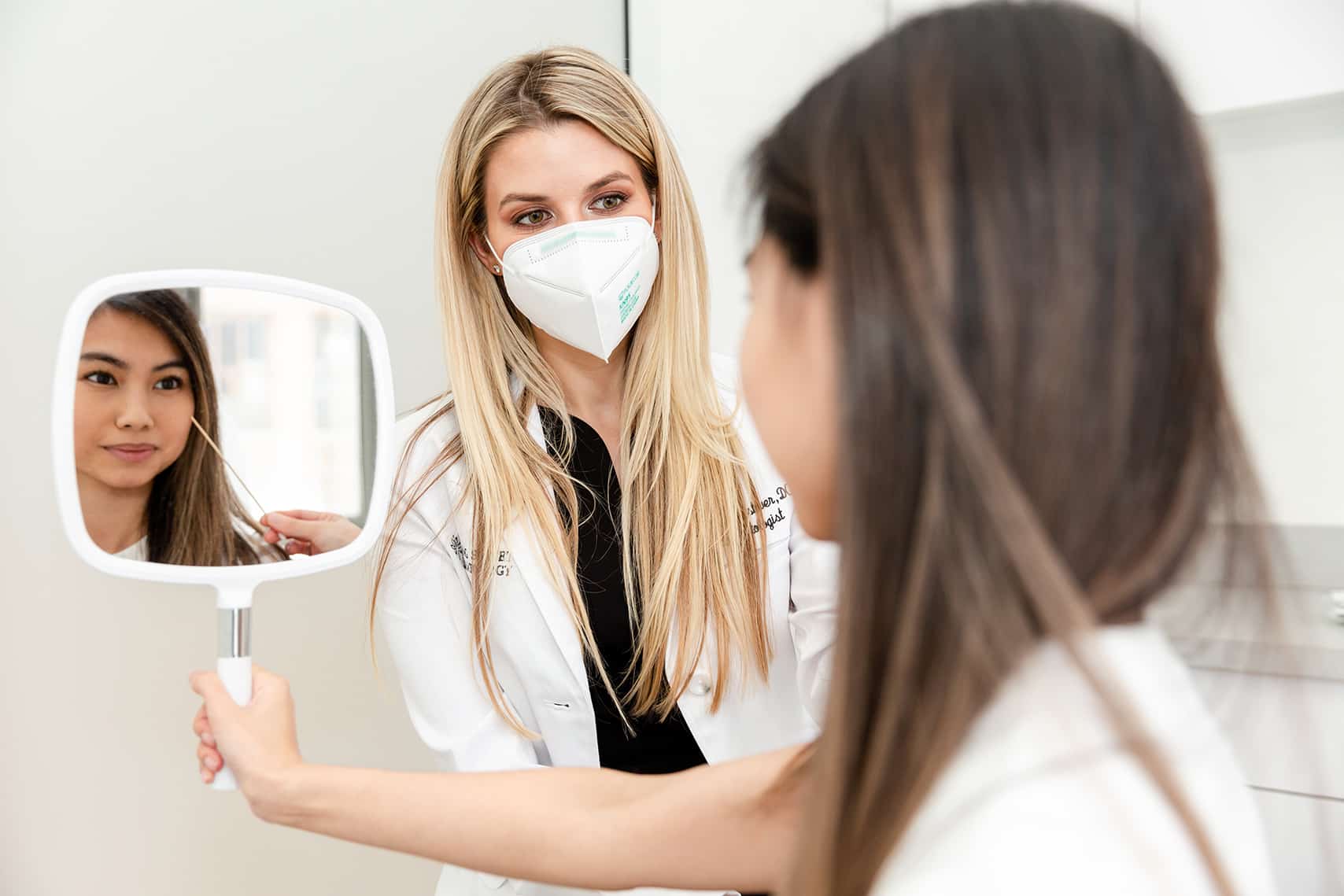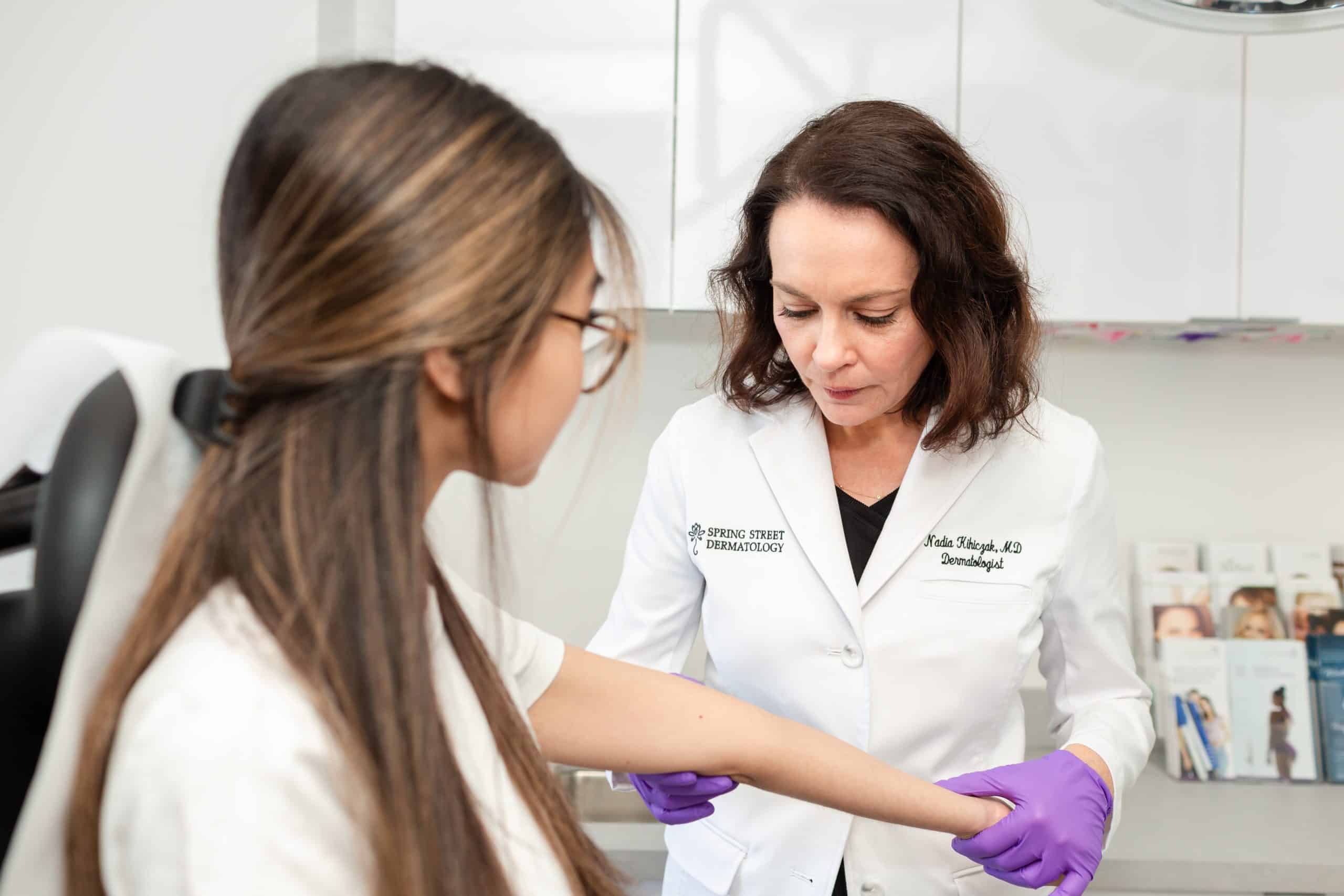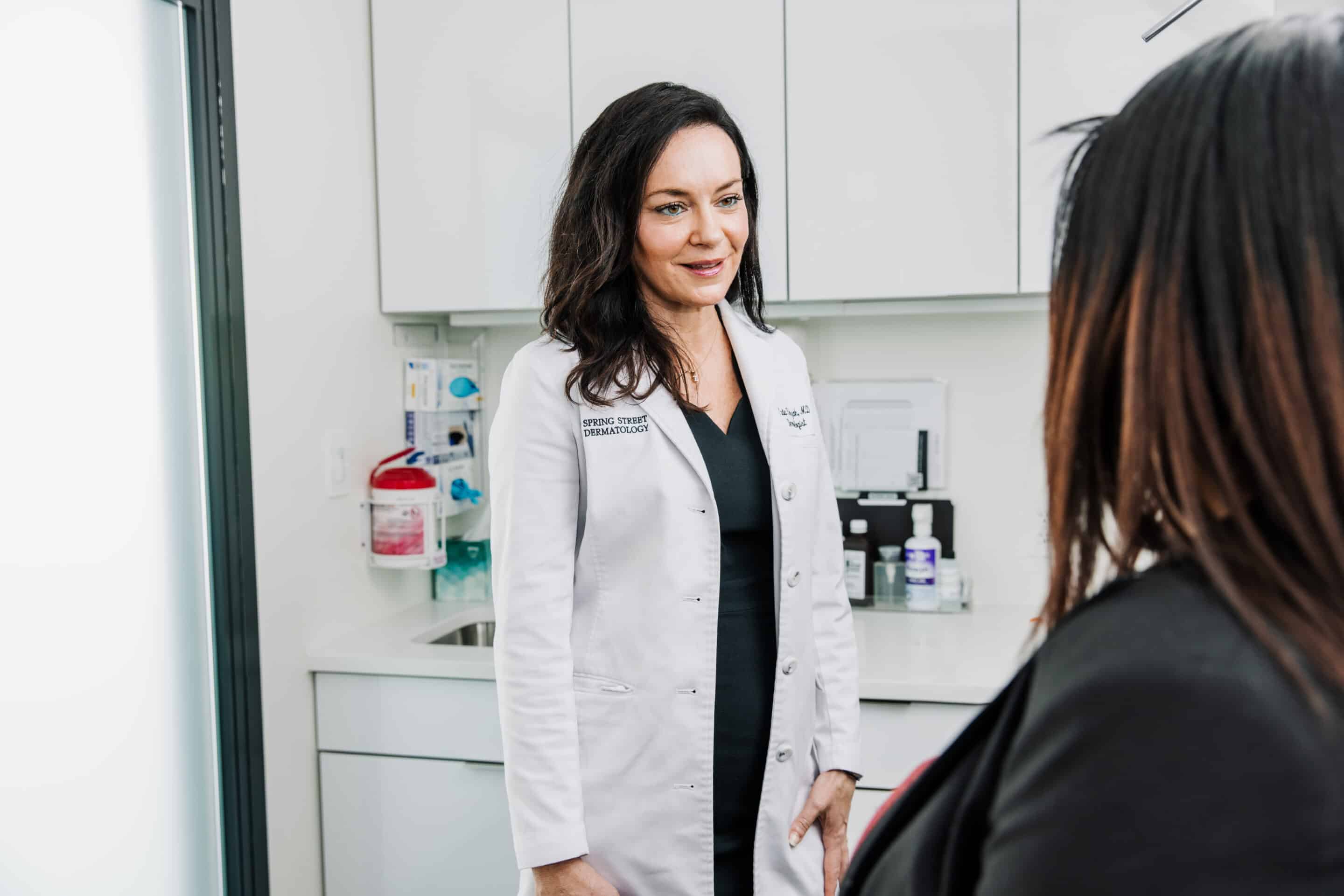
Benign Growths
Screening and Treatment
A variety of non-cancerous, or benign growths, can appear in the skin over time. The cause of these growths is poorly understood, however, some are associated with aging and others run in families. Treatment is generally not necessary, but removal is possible for cosmetic reasons or in cases where the lesion is irritating, increasing in size, causes pain or inflammation or might be suspicious.
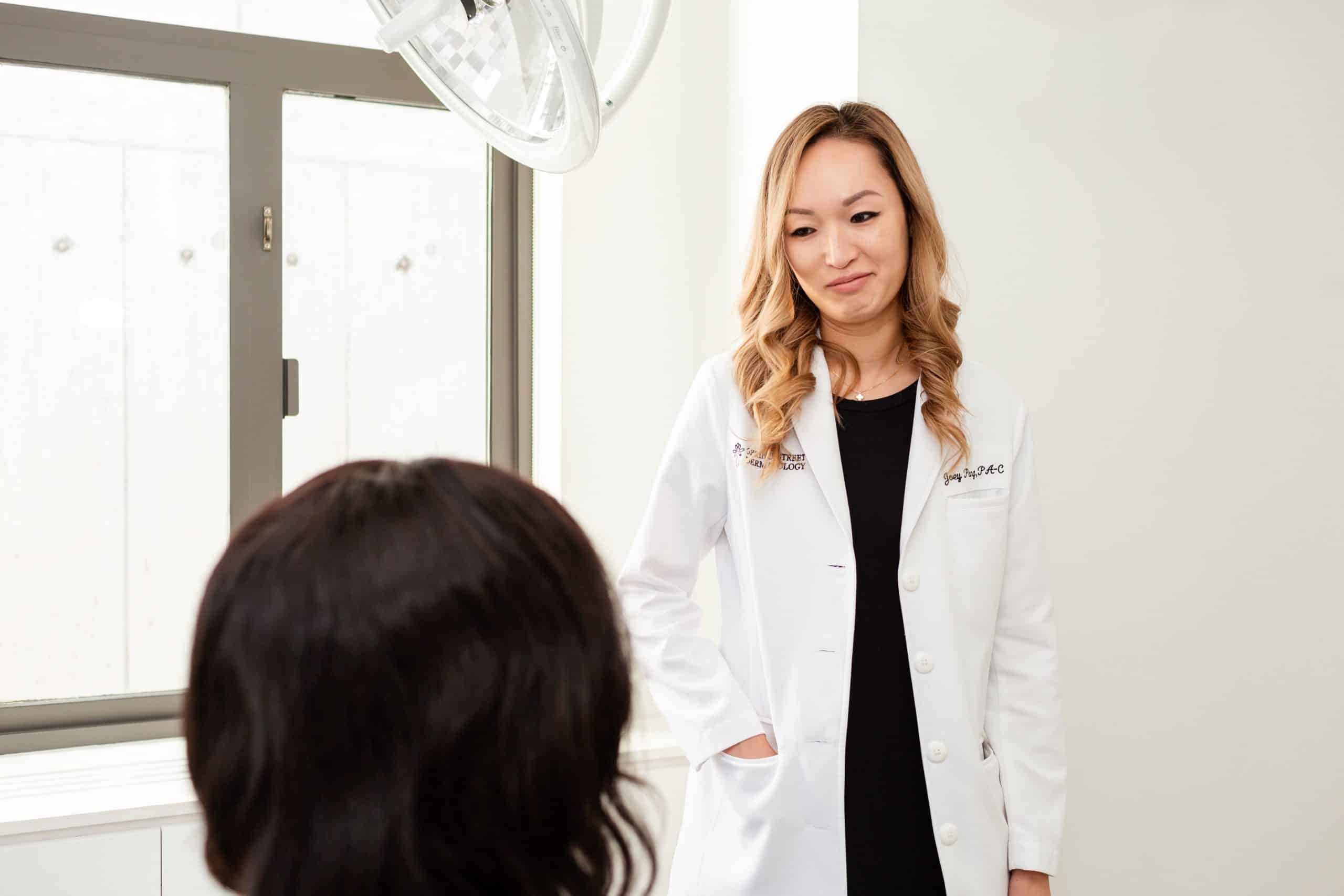
Angiomas, also known as cherry hemangiomas, are harmless benign growths made of blood vessels. They are small, bright red, round growths that tend to appear in adults and may increase in number with age. Cosmetic removal can be accomplished with the pulsed dye laser.
Cysts in the skin can occur on the body (epidermoid cysts) or in the scalp (pilar cysts) when a region of skin invaginates and collects a cheesy material called keratin. Epidermoid cysts may appear yellow and have a central pore through which the material can be expressed. Pilar cysts are slightly deeper, so usually appear as movable bumps in the scalp. Cysts can become infected and require antibiotics. While treatment is not required, they can be easily removed with a small, in-office surgical procedure. We also offer skin cancer screening and patch testing to ensure the correct diagnosis.
Milia are tiny epidermoid cysts. They appear most commonly as minute, yellowish bumps on the face. Milia do not require treatment, but can be easily extracted or electrodessicated (lightly burned) by your dermatologist.
Syringomas are small, 1-2 mm skin colored or whitish lesions commonly found around the eyes. They do not hurt, itch or grow but may increase in number over time. They can be treated with electrodessication (light burning).
Dermatofibromas are firm, pink or brown growths that are small (less than 1 centimeter) and will pucker or dimple when pressed. In a minority of patients,they can be slightly tender when touched. Dermatofibromas are thought to be a scar-like reactive process to bug bites or other skin trauma. Treatment options include surgical removal or cryosurgery (freezing).
Dermatosis Papulosa Nigra are small, darkly colored growths that commonly appear on the face, most commonly in skin of color. They are similar to seborrheic keratoses or skin tags and are likewise of no medical significance. Cosmetic treatment options include cryosurgery (freezing), currettage (scraping) or electrodessication (light burning).
Lipomas are soft, rubbery, 2 to 10 centimeter fatty masses that occur underneath the skin. They can occur randomly or may be associated with inherited syndromes or medications. Lipomas do not require treatment unless they are painful or increase in size. In most cases, removal can be accomplished with a small in-office surgery.
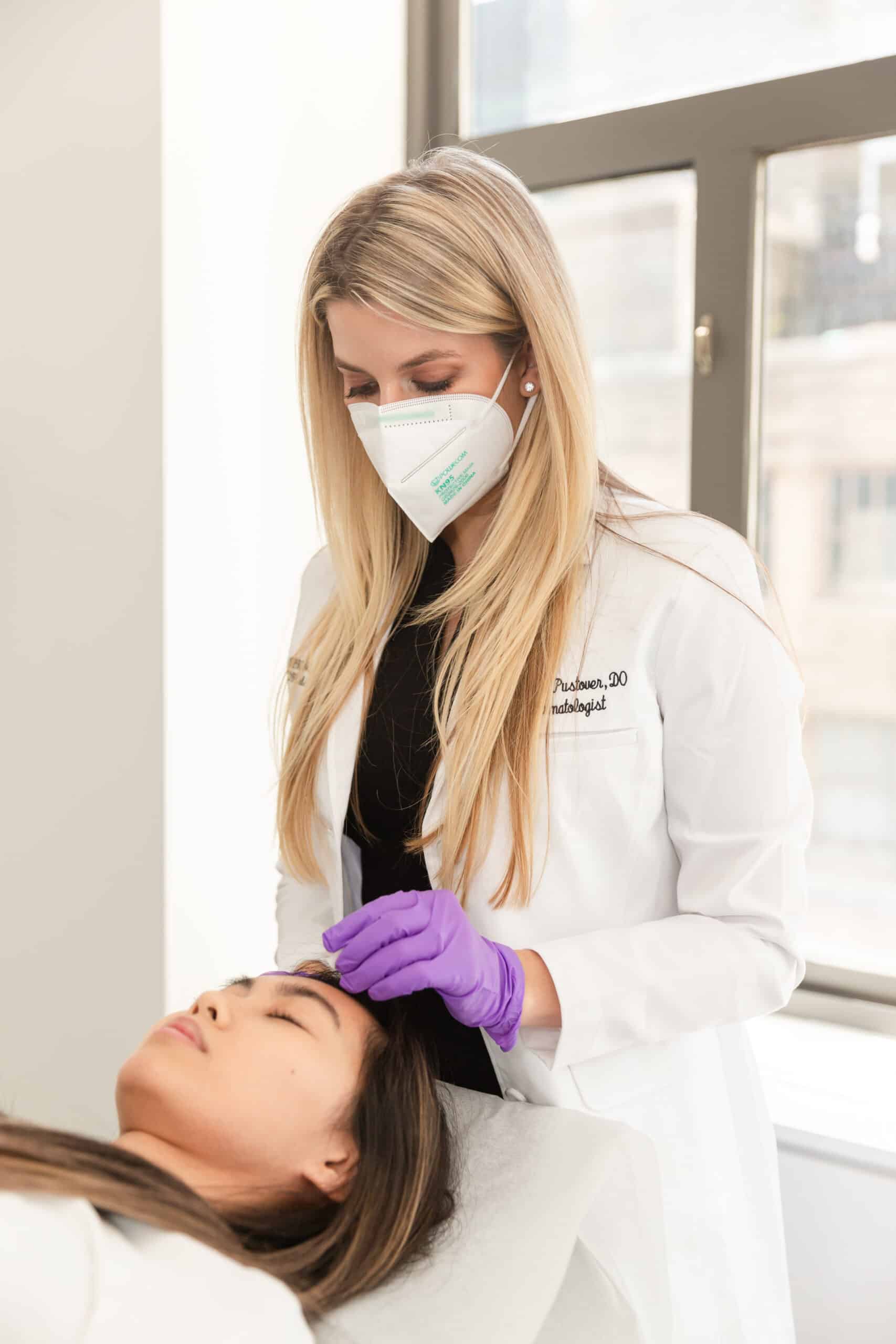
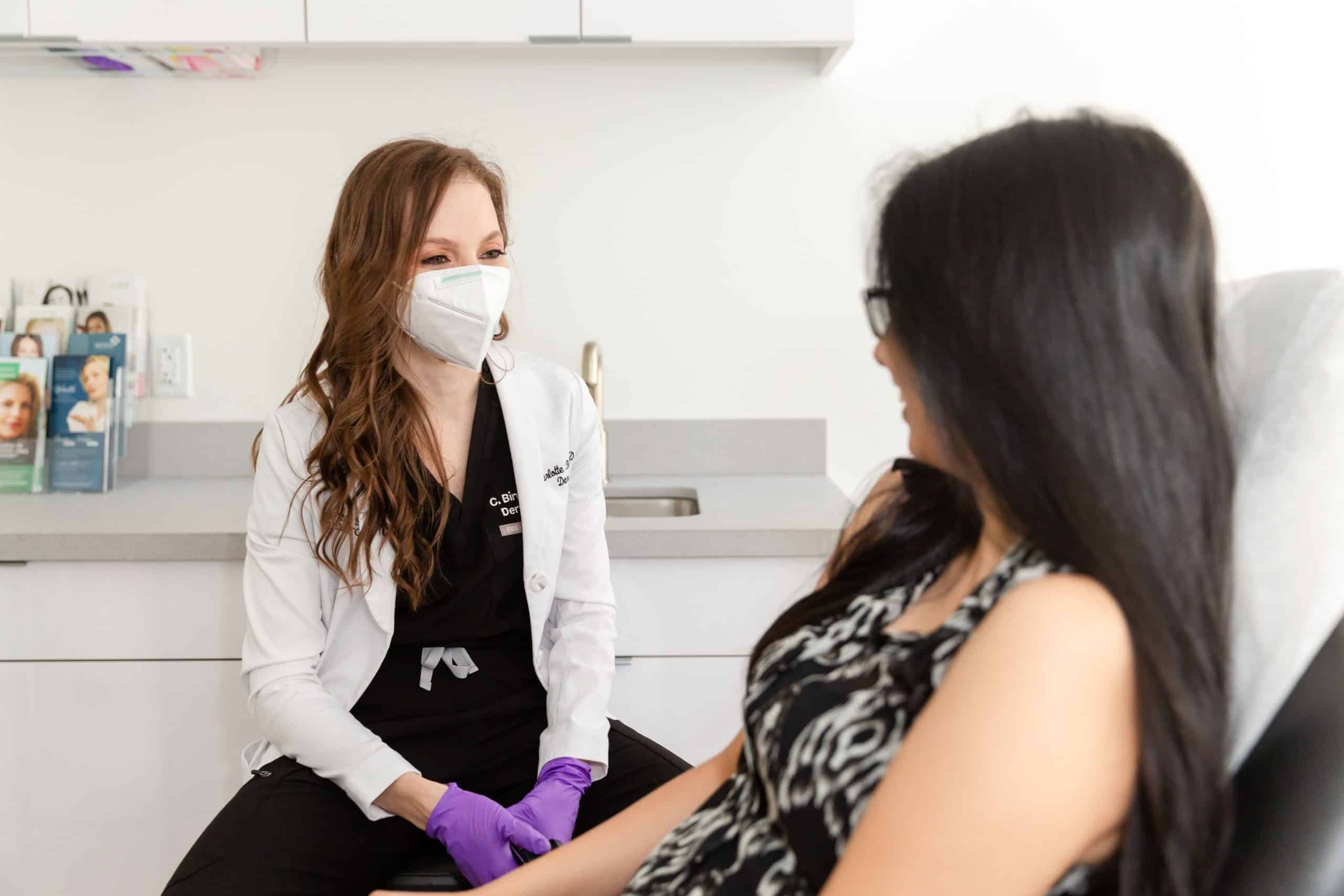
Seborrheic Keratoses are non cancerous skin growths that pop up anywhere and can sometimes be mistaken for warts. They are skin colored, brown or even black and have a pasted or “stuck on” appearance. Seborrheic Keratoses tend to run in families and become more numerous with advancing age. Unless many of them develop suddenly, there is no cause for concern. There is no cure for seborrheic keratoses and no way to prevent them, but there are several ways to get rid of them. Most often, they are treated with cryosurgery (freezing), curettage (scraping) and/ or electrosurgery (lightly burning).
Skin Tags are benign, skin colored or brown growths that are most commonly located on the neck, in the armpits or in the groin area. The cause of skin tags is thought to be friction. They are more common in people who are overweight or who have diabetes. Treatment is not necessary but removal for cosmetic purposes can be accomplished with surgery, cryosurgery (freezing) or electrosurgery (light burning).
Schedule Your Consultation Online
To learn more about diagnosing and treating benign growths, contact Spring Street Dermatology in SOHO, Tribeca, and Uptown, NYC to schedule a consultation. You can also schedule an appointment online here.
Next, Read About
Rosacea
Rosacea is a common skin disease that causes redness and red pimple-like breakouts on the face. It begins with a tendency toward “flushing and blushing” and may then progress to a persistent redness of the central face.
Psoriasis
Psoriasis is a chronic skin disorder characterized by raised lesions with silvery scale that most often occur on the scalp, elbows, knees and lower back. It can range from a very mild, hardly noticeable rash to a severe eruption that covers large areas of the body.
Acne
Acne is a skin condition with blackheads, whiteheads, red pimples and cysts. It usually affects the face, but can also involve the upper body. Acne affects people of all ages and in some, can leave dark marks or pitted scars.
Thousands of New Yorkers Trust
Spring Street Dermatology
Contact Us
SOHO
75 Spring Street, Floor 2
New York, NY 10012
Monday - Friday: 8:00 am - 7:00 pm
Saturdays: 10:00 am - 4:00 pm
Same-Day Appointments Now Available
Uptown
4 West 58th Street, 13th Floor
New York, NY 10019
Monday - Friday: 8am – 6pm
Same-Day Appointments Now Available
| Title | Address | Description |
|---|---|---|
SOHO | 75 Spring Street, Floor 2 New York, NY 10012 | 75 Spring Street, Floor 2 |
UPTOWN | 4 West 58th street, 13th Floor New York, NY 10019 | 4 West 58th street, 13th Floor New York, NY 10019 Sun & Sat: 10am-3pm Mon-Fri: 8am-6pm |
